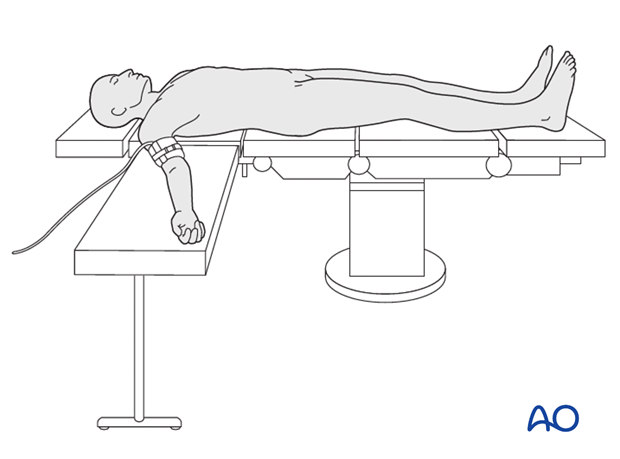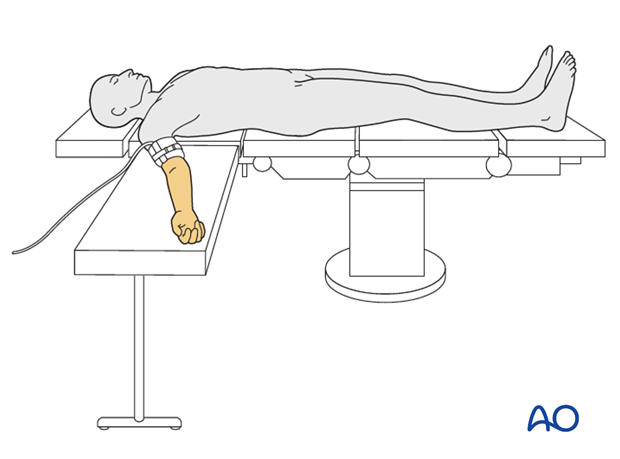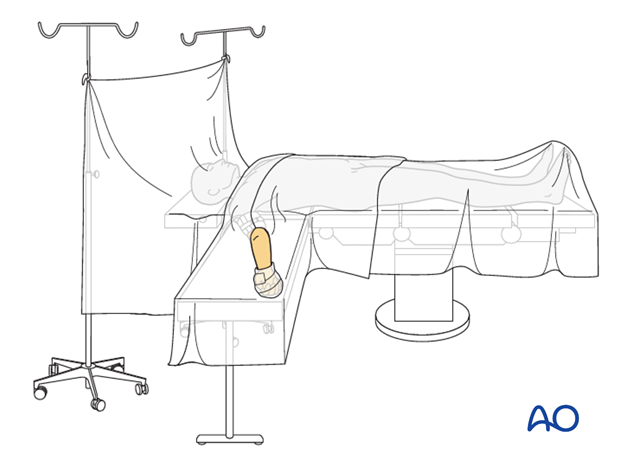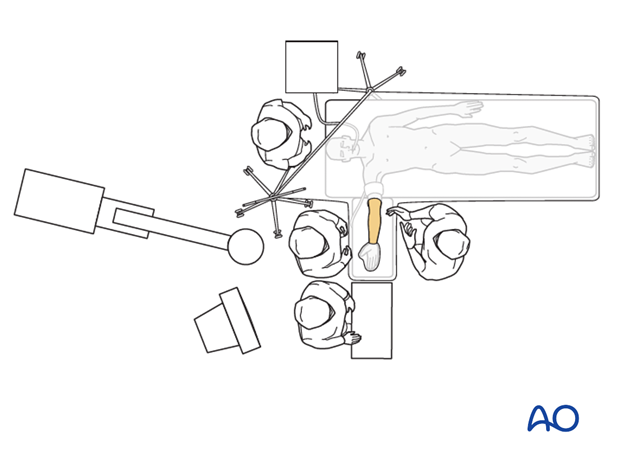Supine for anterior access
1. Indications
This position can be indicated when there are additional hand or forearm injuries.
2. Preoperative preparation
Operating room personnel need to know and confirm:
- Site and side of fracture
- Type of operation planned
- Ensure that operative site has been marked by the surgeon
- Conditions of the soft tissues (fracture open or closed)
- Implants, instrumentation, and equipment required
- Patient positioning
- Details of the patient (including a signed consent form and appropriate antibiotic and thromboprophylaxis)
- Comorbidities, including allergies
3. Anesthesia
The procedure is performed with the patient under general anesthesia.
While technically possible, regional anesthesia is not advised as the procedure can be prolonged.
4. Positioning
The patient is supine with the arm and shoulder supported on a well-padded arm board. The arm table is radiolucent.
Take care to protect soft tissues, skin pressure points, and the position of subcutaneous nerves particularly the ulnar nerve at the elbow.
Adjust the operating table and arm board to the appropriate height.
The elbow is extended, and the forearm supinated.
A sterile tourniquet is placed around the upper arm and inflated at the surgeon’s discretion.

5. Skin disinfecting and draping
After positioning the patient, disinfect the entire upper limb with the appropriate antiseptic.

Drape the upper arm, including the tourniquet. If a sterile tourniquet is used it is applied after draping.
Drape the hand separately to allow elbow flexion during surgery and imaging.
Complete patient draping using single-use drapes or sterile sheets.
Drape the image intensifier.

The surgeon sits facing the patient’s head, the assistant opposite, and the ORP at the end of the arm table.
Bring the image intensifier in from the assistant’s side of the arm table.
The assistant must move temporarily when imaging. Place the image intensifier display screen in full view of the surgical team and the radiographer.














